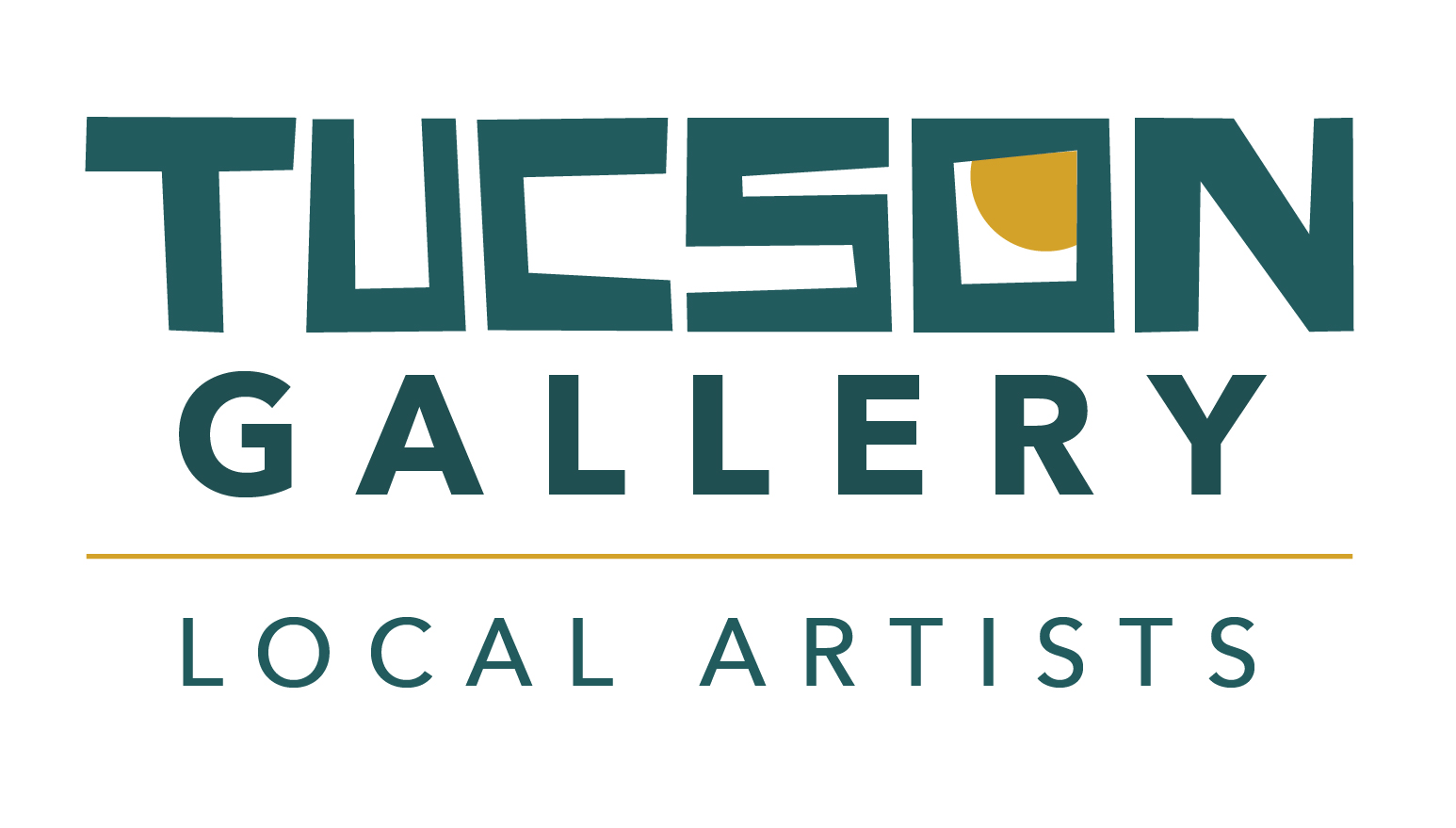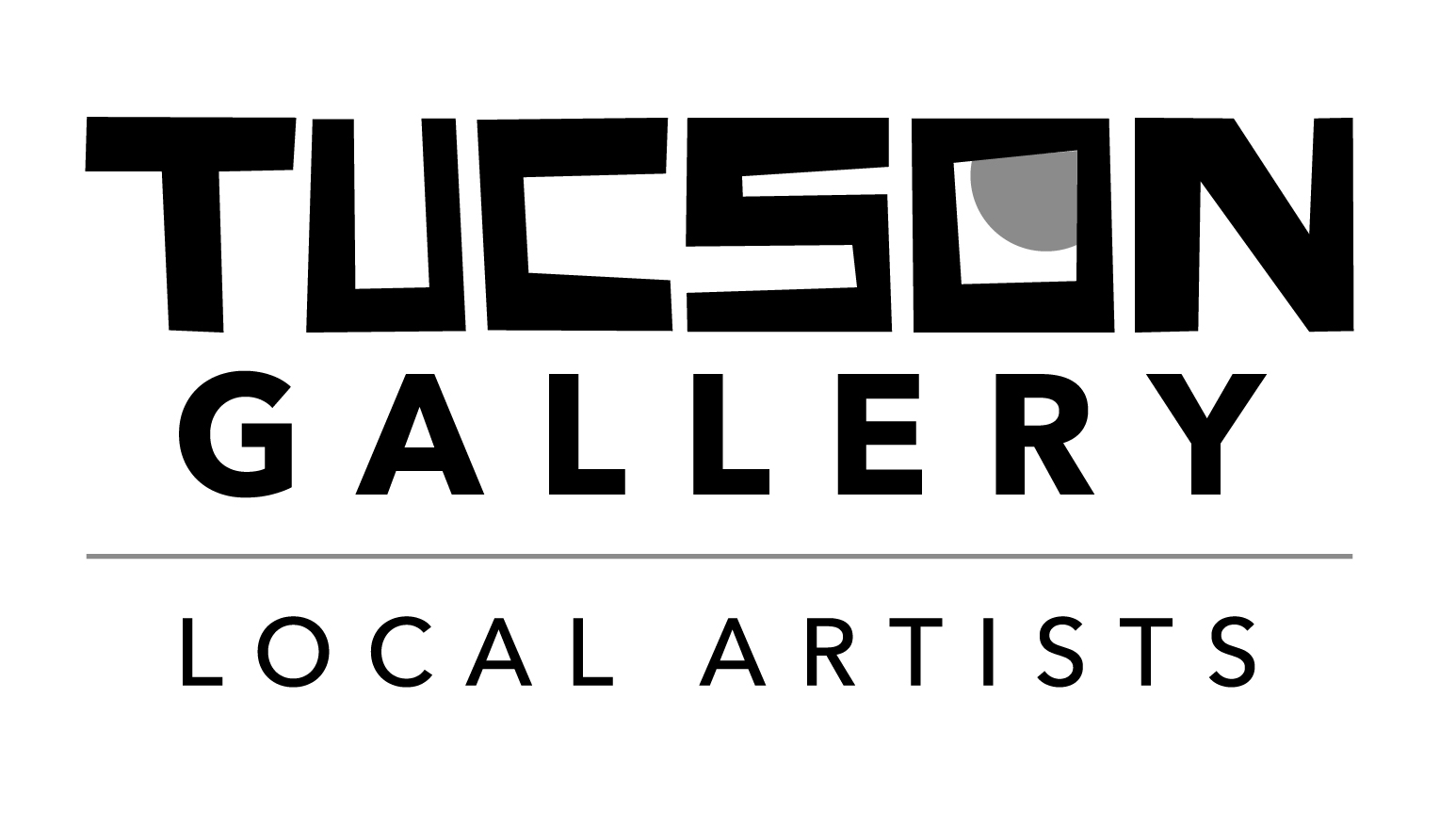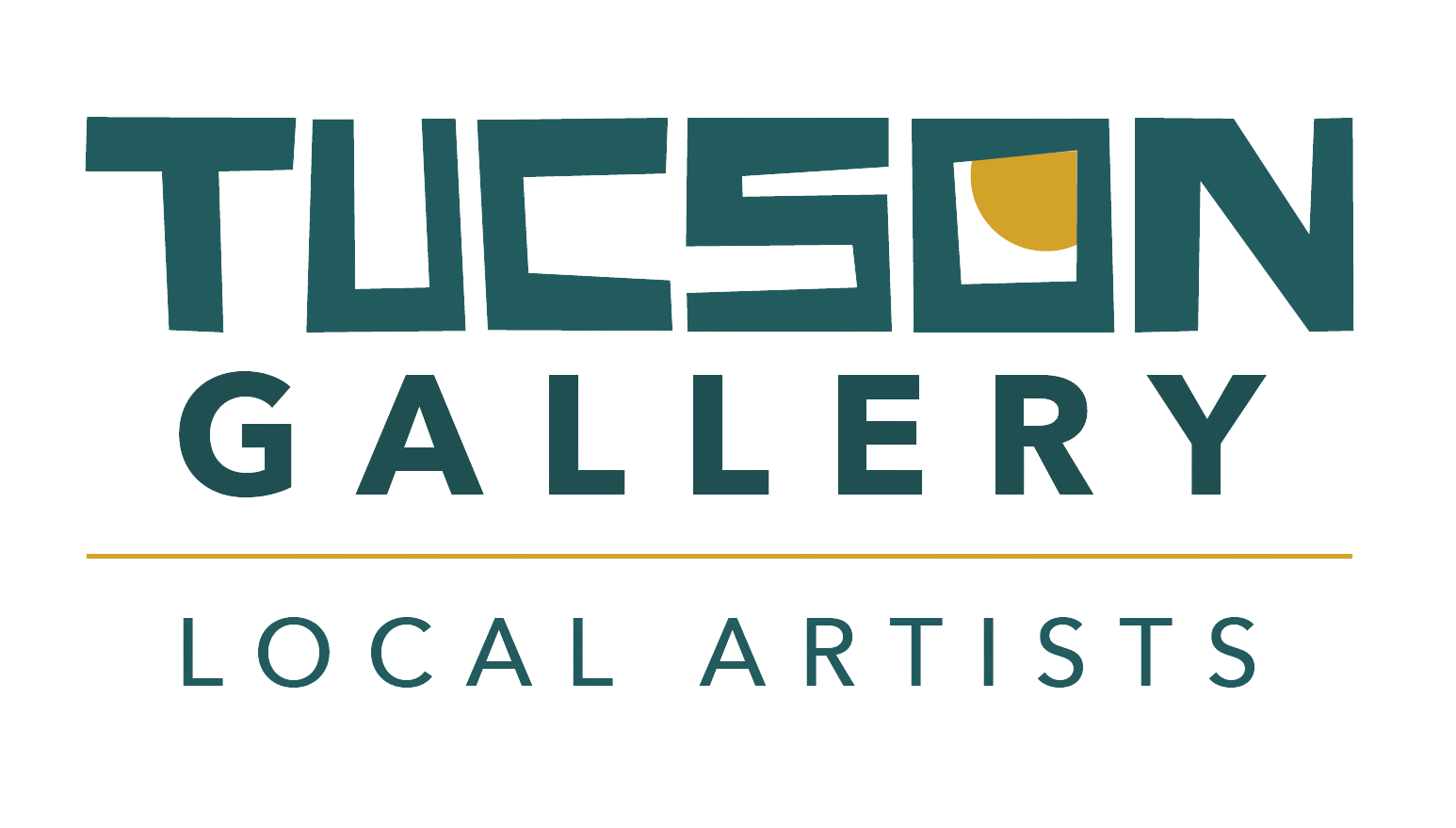Photo Gallery
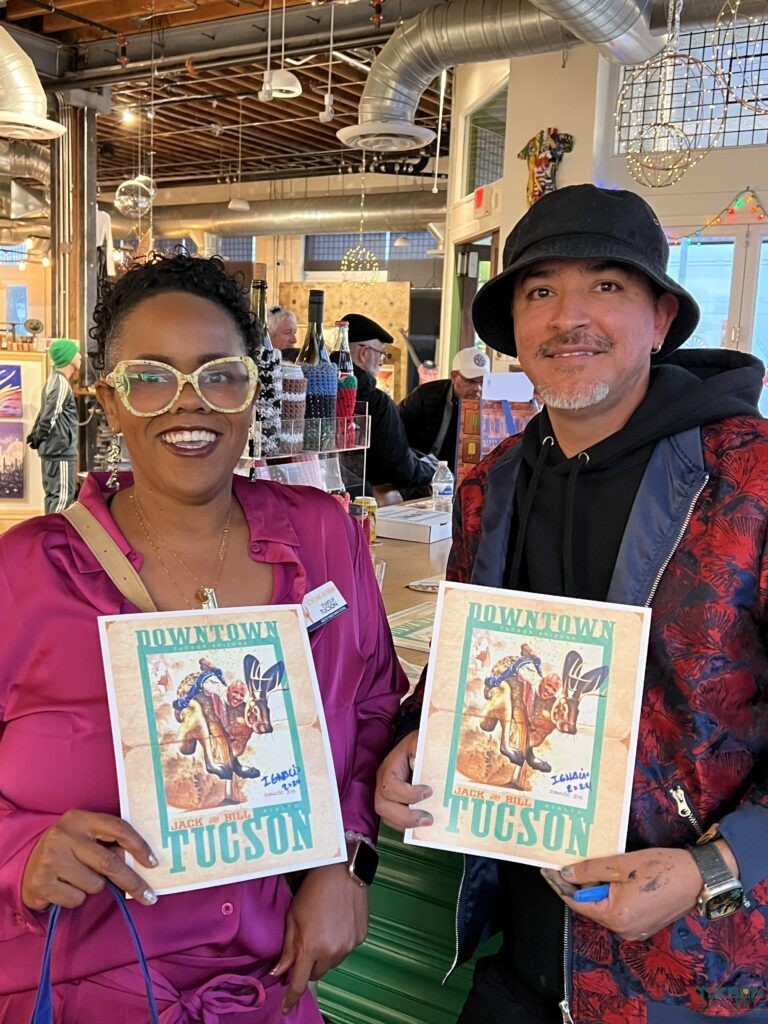
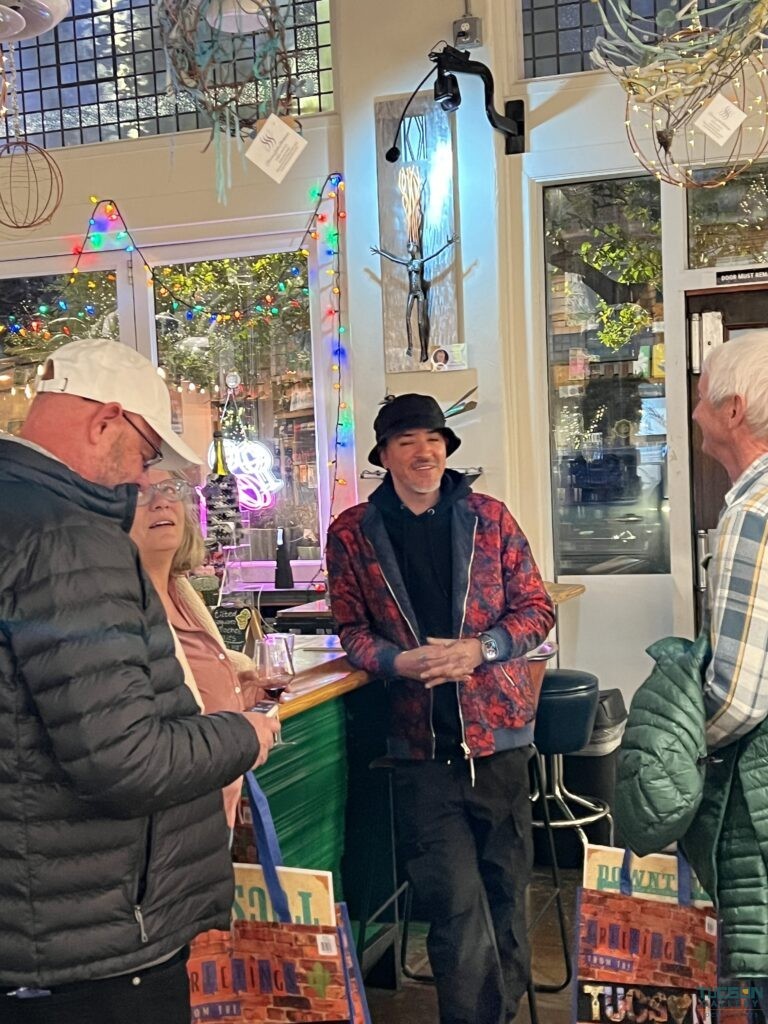
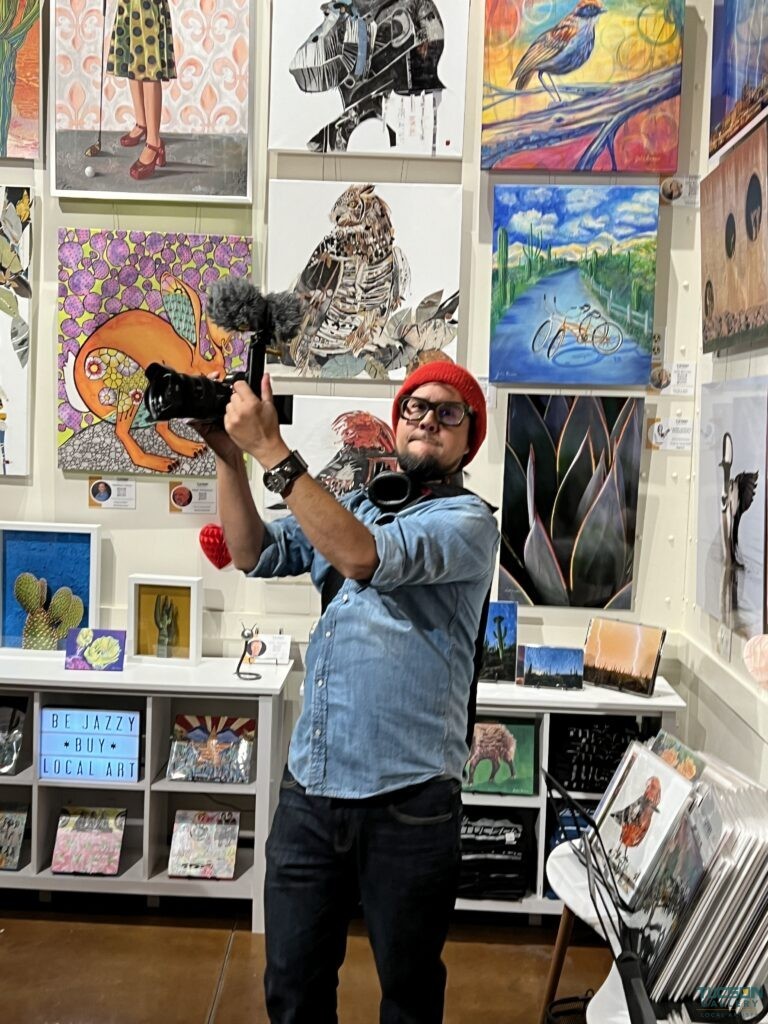
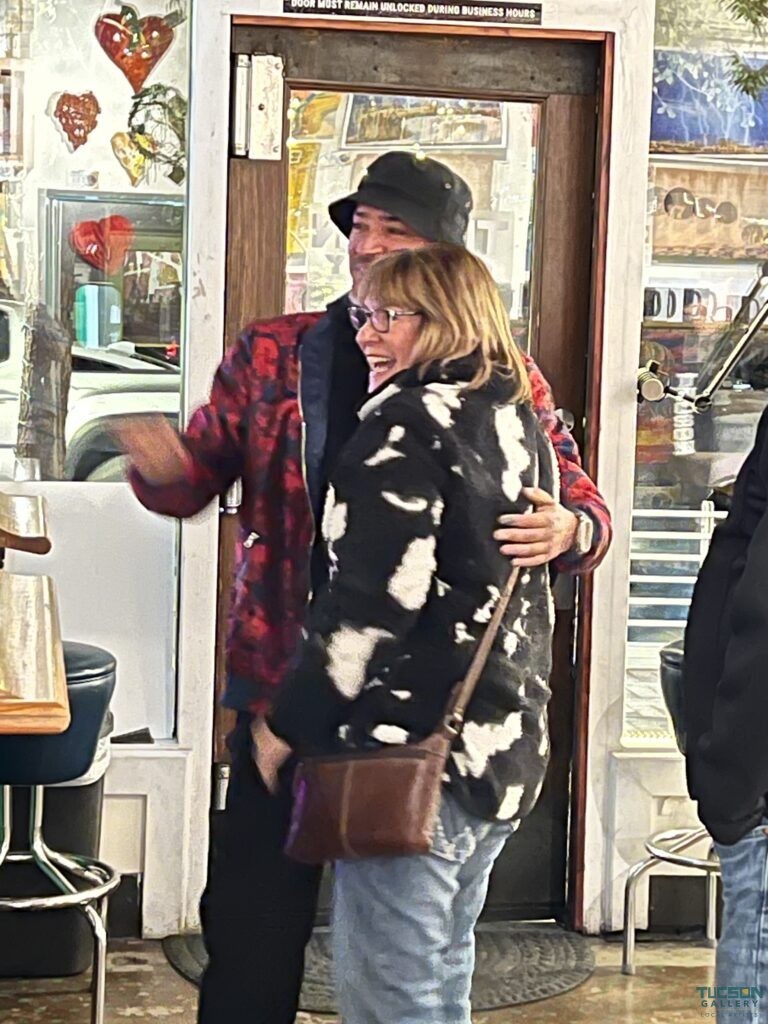
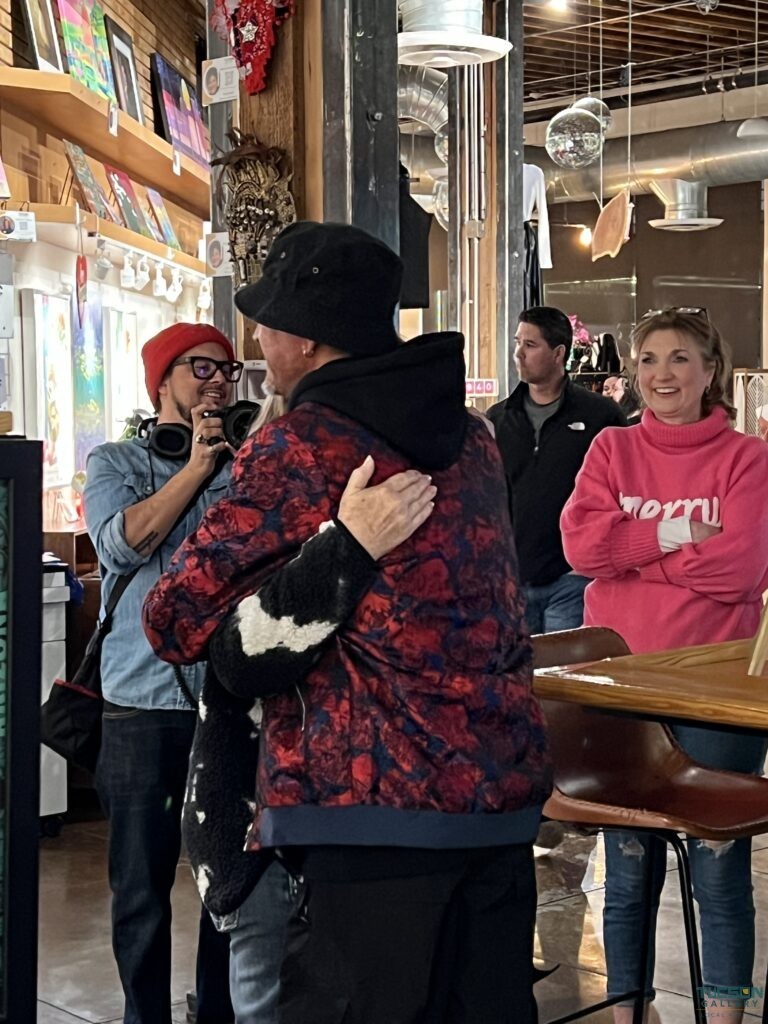
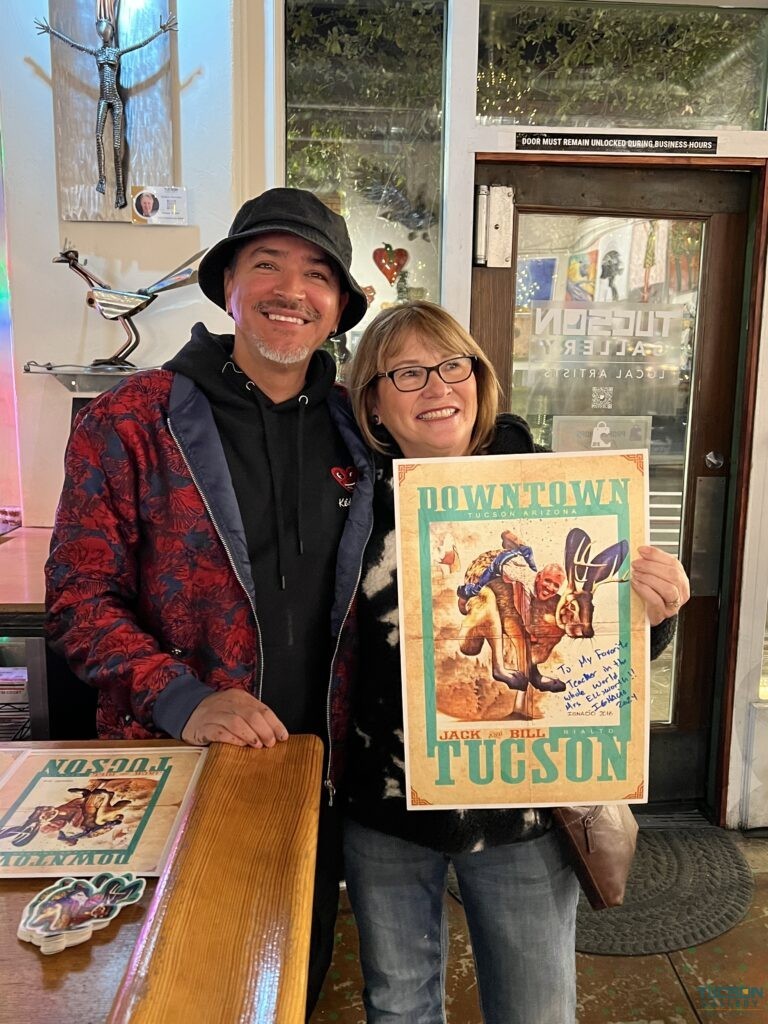
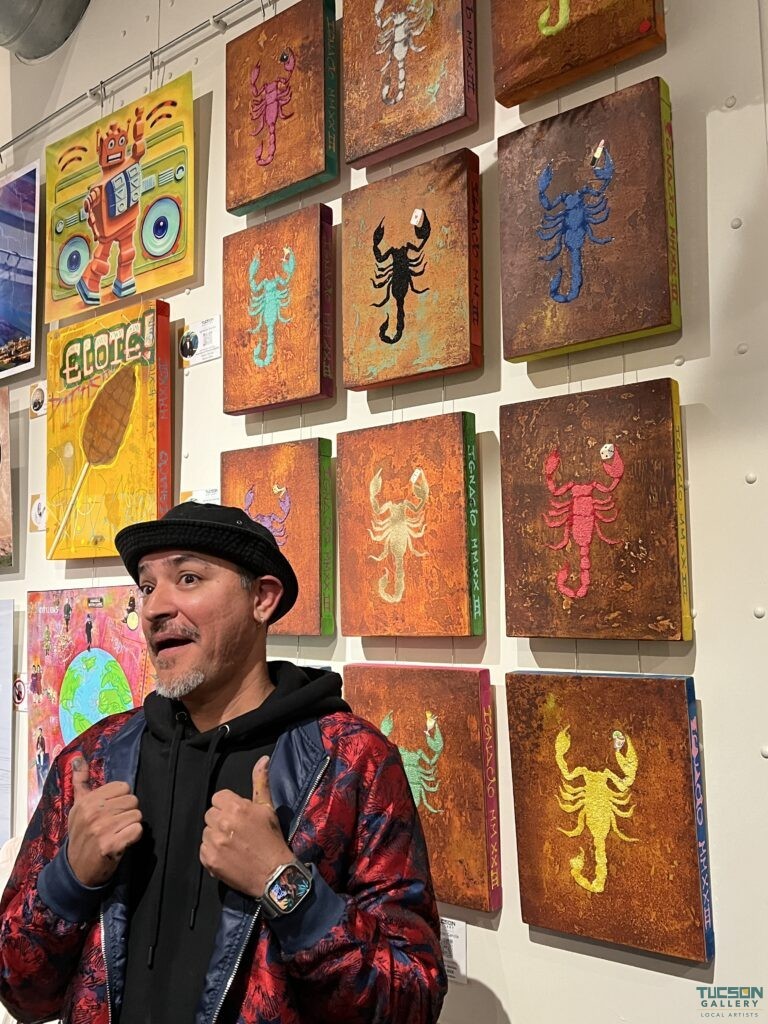
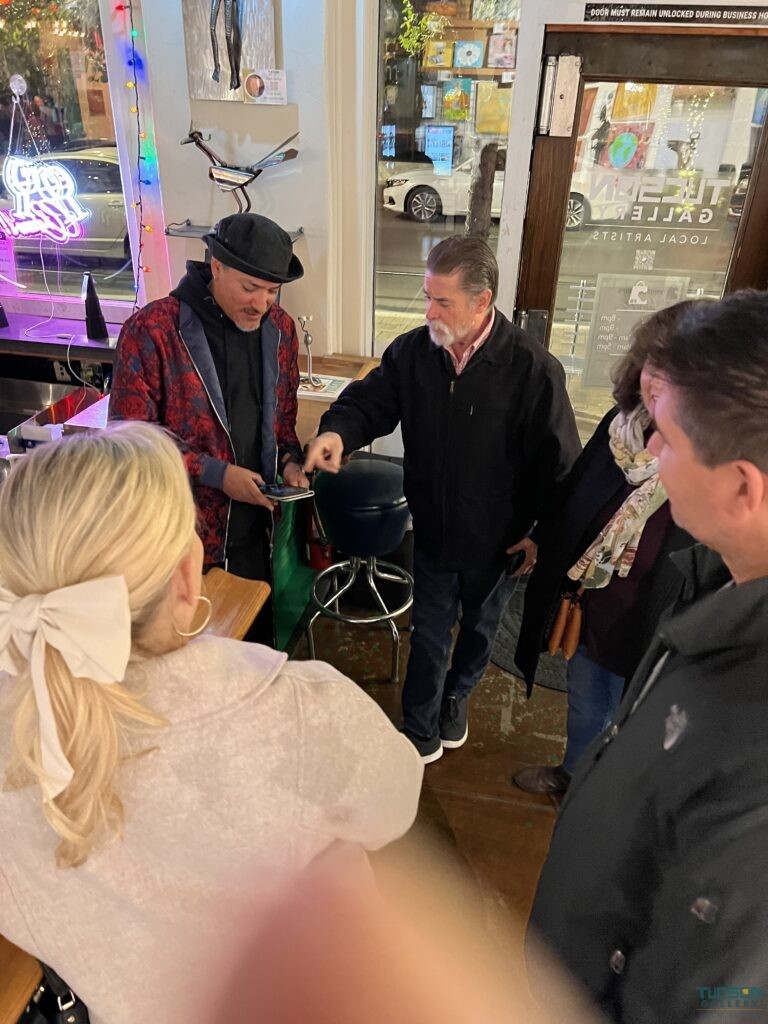
Transcript (Unedited)
All right, welcome back to another episode of Meet the Artist. It’s a production of the Tucson Gallery in downtown Tucson. We’re located at 300 East Congress Street. We’re across from Hotel Congress. We’re in the same block as the Rialto Theater. All kinds of good stuff happening in downtown Tucson. And Tucson Gallery is proud to be situated right here in a busy corner of Congress and Fifth. Every now and then, we’re lucky enough to have one of our famous artists from Tucson come into the gallery. And when they do we snag them put some headphones on and say let’s talk. Yeah today. We’re talking with one of our fabulous muralists The very well -known here in Tucson, and I think right now right now controversial. Yes muralist Ignacio Garcia
Yes, welcome. Hey, thank you for having me. I appreciate this time. All right, so the first question How many murals have you done four thousand five thousand? No, actually, I’ve just counted them I think maybe around 40 50. No, these are just like For the public to see but oh, yeah, the residential ones for that when I started I’m sure there’s probably maybe another 20 I think so not much not much. No, you’ve done more than that. I’m sure I have I literally went to my all my My resources there that I had and I think was around
maybe 50s to 60s. Not much. That surprised me. I mean, I know they’re big so
they take a lot of time. I think so. I don’t, I try not to rush it. That’s probably the reason why I really take my time on it and because when you have something that speaks for itself, it stands out. So, I really enjoy that and so I don’t try to mark my territory. So, you’re a quality not quantity guy. Absolutely, yeah, definitely.
I had the privilege for the other podcast to do Life Along the Streetcar. I interviewed a couple in 2023 who had recently gotten married and for their wedding they didn’t ask for gifts, they asked for money for their GoFundMe site so you could do their mural.
That’s right, that’s right. I was quite surprised, I was honored and I was like, what a great idea. And just to kind of show his love towards his wife to have this beautiful mural and what they’re all about. I was like, let’s do it, let’s do it. So I was really stoked for it.
And I remember talking with them, I said, did you ask Ignacio what to do? Did he give you an idea? And then I get the response was, you know what, we gave him some thoughts as to what we wanted to have incorporated, but we wanted him to have the freedom to create his vision of that. And that got me thinking, like how do these murals get created? Do you go to someone and say, hey, I wanna do this on your wall? Or do they come to you with a vision Or do they say, hey, we’d kind of like something that’s fun and…
It’s a little bit of everything. I think, first of all, is what they are all about. I like to kind of read their brains and kind of dissect what their personality is. And from there, I like to kind of do some research and then I kind of give that back to them and say, what do you think? And they just love it. And so kind of go back and forth. It’s a sense of appreciation of what they’re all about because I just like doing different things. I’m just very curious of what how people think and what they’re all about and I kind of like to express that So and again, it’s every projects different and I like the challenge of that. I think it’s probably because of that It’s just learning along the way and you need to meet people and surprisingly It’s just the information that I gained from that just a one -on -one person. It’s just I like it’s addicting
I mean so by the time the mural actually gets by the time you start putting paint on on a wall You you’ve done this mural dozens of times in paper and print, and you’ve worked back and forth.
Yes, it takes me at least, the research takes me probably twice as long to do it right, because to make sure to, the thing is that, you know, wherever the wall is at, you want to see how it complements the building and the surrounding. You don’t want to have like an eyesore that people will just kind of be like, and it just takes away from other beauty elements around the community or the buildings. So I try to balance everything out because it does complement the surroundings as well.
But yeah, I have to kind of make sure everything’s fine. And sometimes, you’d be surprised, I try to throw it in a little something ugly, just kind of balance it out. Because I think that’s one of my little tricks that I try to do because you have, for example, five different renders to kind of start off. You have to throw one in there that’s completely way off and just kind of weird. Just to kind of, you have to kind of refresh your eye in that way. Okay, interesting. So, but sometimes they like that. So it kind of throws everything off from the original. But I love that adventure and it kind of, it’s just, it’s always, it’s just fascinating. It’s like exploring a new territory.
every single time. So when did you know you were gonna be a muralist? At what point, I mean, did you, what were you doing before you were painting on walls? I was,
I was actually painting musicians, like celebrities, and this was… Painting
portraits of them, or painting on them, like Kiss, like going on stage? Yeah, like naked
painting on their body, you know. No, it’s portraits of what they do, because usually, I used to work in the radio station as a DJ, so I used to do live, yeah, like mixing live. And so with that, you get to meet the artist. And then before they become famous, you get to meet them in person. So that’s kind of how I got my way into it. And they kind of wanted some approach to themselves and finding out they became world famous, like Eminem, for example. I mean, that can just go on like back in the early 2000s.
So – That wasn’t in Tucson though.
It was in Tucson and in Phoenix. Okay. So this was something that kind of come came unexpected in my lab I was actually in Phoenix at that time DJing and I just I needed to come to Tucson to get away from Phoenix for a bit and it was only going to be for like three months and then I’m staying here and working in the radio for hot 98 and Yeah, so I was there for two and a half years, you know
And you meet these artists and then you would start to unlike portraits of them started doing portraits. Yeah towards the end
Clear Channel took over, so it wasn’t the same. The creative field was pretty much gone. So then slowly we just kind of networking with them and figuring out a way to help out the new artists. So at that time, musicians were actually depending on the DJs because we were playing their music in the clubs to get their word out there. So that’s how they were coming to us. We were more valuable at that time. And to see where DJs stand now, it’s unremarkable to me.
You know and so then at what point did you decide hey, I want to I want to paint on walls
So so then I had this guy That my sister was getting his hair hair done by him wanted a portrait of himself So he liked it so much. He just came up and say hey, would you like to paint my ceiling like a you know? Yes, it’s like really kind of kind of Versace, you know, you know elaborate. Mm -hmm, you know ornate house I was like, oh, yeah, it’s a really cool idea, you know, it’s like, yeah, let’s try it out. It was just more like a fun thing to do. He trusted me. I was like, you know, we can, we can always repaint it. So it was something to kind of try out. Turned out to, it ended up being like three months doing that, and every, you know, it ended up being a three month project, that was my first mural. And so, surprisingly, it just took off like crazy. So now I’m gonna show you this real quick that way you’ll see what this is my first. This is great radio people
He’s showing pictures. So I know I
Have you this radio? I would want you to to to explain what you see here real quick. Oh, no, he’s gonna put
He’s gonna flip this around on me. Oh, no
Okay, never mind. I guess I can’t find it right now. Well, what we’ll do is So this was my first mural this is like the Sistine Chapel exactly this I mean
I mean, we got to put this on the Tucson Gallery’s Facebook page so they can see this, but this looks like it’s like a church in Rome, like done by one of the great masters. That’s incredible. Yeah, that was me.
I was 23 years old. That’s you? That’s me.
Oh, yeah, we got to put this picture on Facebook so people can see that because that does not look like you. It looks like a little kid.
Yeah, that was a long time ago, and that’s how it all started. and then kind of word spread and then did a lot of these fresco kind of
because at that time that was popular yeah and now now you see a lot of public work so what does that look like how do you get into the into the public setting is that do you do audition for that or do people come seek you out at first you
just ask hey you know can I paint your wall sure you know again you know you it’s a great way to kind of get your your name out there but you know at first is, you know, let’s see, 10 years ago, people thought it was like, oh, it’s kind of cool, but it wasn’t as gravitating as it is now. I mean, now it’s like globally people want to put murals everywhere. I think it’s going to last for a long time now because it’s the only way, it’s like it’s a marketing strategy and overall it’s not like social media that’s always instant because now you’re actually seeing a big piece. So I think that’s becoming an outdoor gallery everywhere. So it’s it’s gonna pretty much gonna last there. So yeah, so yeah
I don’t know how murals work across the country But in Tucson it seems like we’ve spent a lot of time trying to create something that is Appropriate for the building appropriate for the neighborhood appropriate for the topic So it’s it’s not just something that’s just a commercial for whatever the business is. It’s really about the community
No, I I live deliberately. That was my mission at first. This was like 10 years ago to kind of create a kind of a an outdoor gallery. I don’t know why. I think it’s just that it was a stupid idea that I had at that time because you know I was like well if people go to Italy and they see all these beautiful pieces in you know in the public and it’s historic you have to see these frescoes and all that. So I’m like why can’t Tucson have that? You know what I mean? Or anywhere can have that. So I was like Tucson was a great place to breathe that. And then so And then of course, the people here are just so open and friendly and they’re like, yeah, sure. So slowly started becoming that way in the public. But then I think 2016, that’s when it kind of started. But what it really, really started was after COVID. I think after George Floyd, that kind of made the statement of putting the message across. And somehow it just kind of carried it on its own, surprisingly but I’ll never forget that. I mean
people think it’s just kind of went on on its own but I honestly think I mean it was the George Floyd incident that actually sparked that and kind of put that message across and because of that it allowed artists to really put their you know their talent in in there
and then just kind of spread it that way. I think I think the community impact is important you know economically it’s a huge win for Tucson I mean you know in the Tucson Gallery, people come in for the murals, the people come to Tucson to tour murals. I mean, the collective muralist population is creating a lot of economic development for Tucson.
Yes. And that’s something that I learned along the way that I’m like, you know, if this is gonna be something that we can provide and including with the other artists that I actually talked to them, this was actually during COVID. I talked to Joe Padgett and Jessica Gonzalez, as well as Isaac Caruso. I was trying to get Rocky Sci -Fi to kind of say, hey, let’s team up here instead of, you know, instead of being independently and kind of not knowing each other, I think let’s just kind of collaborate. So, originally, I had an idea. It’s like, so we ended up going to Joe’s Padgett’s house and then we had a meeting and I was surprised that they would follow through. So, it was really nice to the first time to actually meet other muralists exactly the same, I know, hard work that we do behind, you know, painting, to be, you know, painting a mural. But, and then since then we just kind of felt like we understood the hard work that goes along with it. So we kind of became closer because of that
because not many people understood the hard work that went behind it. So, and it’s hard to explain that to people that, you know, so we just clicked. And since then we’ve just been helping each other out and helping other artists and supporting them and trying to influence other artists, too, as well.
I know when we started the gallery, you were the first person we approached, and long story behind that, which we won’t get into here, but one of your missions at that time was to make sure that other people had an opportunity to get into the art world. It wasn’t just about selling your work, it was about giving an opportunity for others.
That was my mission for a very long time. I felt that if having these public pieces of work, one thing that I … Okay, the reason why I had a passion for that is because when I was living in LA I’d see these beautiful works and during that art movement of the street art that was happening at that time with you know Banksy and Shepard Barry Shepard Fairey you know the invader these were like the beginning stages of the street art so that was the kind of the the beginning of like being street art finally getting accepted and then but I was there I was there to see that that development happen and so and I’m like why Tucson cannot have this type of quality of work So, and then I was like, well, let’s see where it goes. Let’s see where, you know, putting these types of work and putting that quality into it because this is exactly what I felt that Tucson needed. Because before it was the art world in Tucson wasn’t not like well -received and it was just devalued. And that’s what really aggravated
me. It’s like, you know, people are really working hard to sell a painting, but they’re getting less value for it. So then I decided, people need to be exposed by this and so that’s why I decided to push it hard for myself. And I’m doing this by myself in some cases, you know what I mean? It’s something I have a mission to do to kind of influence anyone or young artists or any artist that has that ability to do that or wants to do that.
So yeah, I know you’ve been very good with your time and if you follow Ignacio, you know and reach out to him on social Media, he’s usually pretty good about responding and and where he can providing some guidance I know you’ve been very helpful to a lot of young artists. Yeah, absolutely
I mean whatever I can do any tips and stuff more than happy to do it, but it it’s hard man. It’s no joke It’s it’s a hard You know medium that to to get yourself into I mean I’m like, I’m not worried like like being outside in the cold freezing cold You know, I mean the weather is unpredictable
I went up in that lift one time with you just to get a experience and I’m like, whoa This is like it’s vertigo up here. It’s very vertical. This thing starts shaking. You’re like man. You got a paint on that
Absolutely. So that’s why I wanted you come because it was a very important to me to for you to describe it How it is as a muralist, you know in that level, you know I’m like my face is halfway burnt because you know, there’s so much Sun that kind of reflects back to the wall So I’m kind of like, freezer burnt, you know?
Well, we’re part of an event today called Meet the Artist, and I’m gonna start wrapping it up here because we got a pretty big crowd waiting to meet with you. And part of the reason why, and I kind of can’t let this go without circling back, is the controversy. So we’ve had a mural on the side of the Rialto since 2016. Yes. It’s called Jack and Bill, it’s a jackalope with Bill Walton as a little cowboy riding this jackalope. Yes. And after seven years, with you and the Rialtos, it was time to change this.
Yes.
And so what goes into that? I mean, what makes that decision for you?
So, let’s start off with this. First of all, the original idea was actually a little girl riding the jacket. It was a representation.
Are you calling Bill Walton a little girl?
I’m not, I’m in the middle, I’m in the middle. I can’t decide. So, to be honest, it’s just when the rodeo days, always that it happened here and I’m like this only Tucson has this so I’m like what a great way to kind of represent Tucson that way you know I mean so I thought of like you know instead of having a horse you know or like anything I was like how cool would it be a jackal it would be because not many people knew what a jackal it was and so so I came out this concept and I just like this is great the day before I started wanted to start to paint they they ended up changing it to, hey, can you change him, can you change it to Bill Walton? And I’m like in front of all these people here, and I’m like, who’s Bill Walton? And they’re like, what, you don’t know? I was like, I’m sorry, I don’t, I’m just an artist.
If you don’t know, Bill Walton is a sportscaster, he’s a former basketball player, son played at the U of A, and if you listen to U of A broadcast, he is sometimes, he’s a little bit verbose, and that means some people like him, some people don’t, but a lot of people, if you follow U of A basketball, at least know him.
Exactly. It’s amazing to know that this just even just the opportunity to know that that change I it was completely unexpected on my end, but to know that that controversial situation definitely Kind of put me in the middle of it, but I’m still the same. I I don’t know I’m not into sports. So I’m not I don’t know much Yeah, so it’s like one of those people that really hate them or people love them or just don’t know so I’m in the category that I just don’t know because I’m not into much of the sports, so I’m sorry.
But then that’s been up there for a while, and now what you’re painting is, tell us about the one you’re doing.
So the reason why it was, for a while I’ve been wanting to paint over it because it felt like, it didn’t feel like it was downtown, it was more like a university kind of a perspective. And so, and then didn’t get the chance, and then now a new owner’s involved, so like now finally kind of got that gateway to be open. So it took a while to kind of get this opportunity and going but finally it went through and then and I felt like something that kind of again a sense of an identity of what Tucson is. People love the empowered woman so I’m like well maybe I can kind of branch it off but now it’s like for the first time I could actually paint something that it’s really about me in my style for the first time I actually kind of expressing myself as an artist and it’s bizarrely to go back to the traditional ways or traditional art it’s just interesting because it’s a lot of work. It’s a lot of work. It’s time consuming. But I’m so devoted to it to make it look just perfect and to really reflect
on Tucson what it is. Because I mean to know that one number another thing that I really wanted to kind of connect to is that the growing music scene that’s coming here to Tucson. And that felt like I needed to have that connected for the future of the to see how far it goes. So before we
wrap up though, tell us a little bit about what the image will look like and of course we’ll have this on the Facebook page and you’ll see it as but
it’s like a guitarista? Yeah, la guitarista. Yeah, the woman in the guitar. Yeah, or the female guitarist. And it’s very beautiful, it’s very colorful.
If you’ve seen The Empowered Woman, it has a similar style. Yeah. And it’s it’s just it seems appropriate for the side of the Rialto. Yeah and I want to make
this clear this is something that I did not lean to lean to that style I mean it’s just because it’s something that people can really connect to so I out of respect it’s just like I think it’s the right thing how it’s kind of shifting on its own and to see how Tucson is actually to be honest I think Tucson is actually shaping it the way it is so I’m following and listening to the people and valuing and see how it’s evolving. And that kind of represents what I’m used to, what I’m seeing on the Tucson scene. So this is not my major perspective. But it’s something that kind of how the community kind of made this in this way.
Absolutely. And we’re going to have to wrap up because we’ve got a large crowd here forming for Mr. Ignacio Garcia. If you want to listen to other podcasts, you can head over to our website. It’s the TucsonGallery .com. Under the Meet the Artist section there, you can find different podcasts we’ve had with many of the different artists in the gallery. And then you want to sign up for the newsletter while you’re there because then you can find out about all these meet and greet opportunities and find out when Ignacio will be here next. And as long as we have, at the gallery, we’ve worked out with Ignacio, as long as we have those Bill Walton and Jackalope prints of the mural, a lot of them are going to go tonight, but as long as we have them, they’re free. So give us a call or come on down to the gallery and we can get you one of the free versions that are available. But that’s just to, again, to support the community and thank you and look forward to the next one. But Ignacio, thank you
so much for your time.
Well, thank you, Tom. I wish I could have talked some more about it, but yeah, we got it.
We’ll get you back on.
We’ll do a second version of this. All right. Thank you. You’re welcome.
